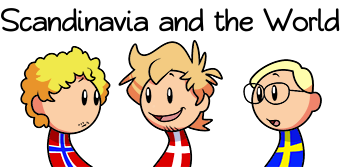Community made Fact Card:

The smallest US state, Rhode Island (1,212 square miles), has a larger population than the largest US state, Alaska (663,300 square miles), with 1.055 million residents vs. 736,732.
7 years ago #9804179
2
0
"The next unit up is the rhode island, then the texas, and then the alaska. Some versions also have the michigan and the california. "
This is HOGWASH! Yes, people here do SOMETIMES use a football field as a comparison for size. I've never heard of the others being used though. In general, we tend to use driving times to measure distance. "It's an hour's drive away" means about 60-75 miles, depending on the traffic. (Highway speeds assumed)
This is HOGWASH! Yes, people here do SOMETIMES use a football field as a comparison for size. I've never heard of the others being used though. In general, we tend to use driving times to measure distance. "It's an hour's drive away" means about 60-75 miles, depending on the traffic. (Highway speeds assumed)
8 years ago #9703695
2
0
mainly because Rhode Island was one of the first of the 13 first colonies in America, while Alaska, although very big, is also quite cold, and that not a lot of people wanted to go there, until the Klondike gold rush, when about 100,000 people traveled there for gold.
9 years ago #9572592
2
0
There is a system of measurement used by the news industry in the United States, wherein the basic unit of measurement is the football field (as in, a new public building which is as big as two football fields). The next unit up is the rhode island, then the texas, and then the alaska. Some versions also have the michigan and the california. They don't teach this system in school, but I once sat down and figured out how many football fields make one rhode island, but I can't find that note right at the moment.
And it's hardly surprising that Rhode Island is more densely populated than Alaska, considering that historically most of our population has arrived on the East Coast, and a fraction of those arrivals moved west while most stayed where they landed. According to the U.S. Census Bureau, the first eight most densely populated states are in the East, whereas the least are in the West, apart from Alaska. The West Coast isn't a whole lot better, with California being #11, Washington #24, and Oregon #39. Another fun fact: The population density of Alaska is half a person per square kilometer. (`_´)ゞ
Also, Alaska is more or less what you get if you moved Australia up near the North Pole. Most of its population is concentrated along the coasts, while the inland areas of the state are, as it were, the sub-arctic version of the Outback, only with polar bears instead of dingoes.
And it's hardly surprising that Rhode Island is more densely populated than Alaska, considering that historically most of our population has arrived on the East Coast, and a fraction of those arrivals moved west while most stayed where they landed. According to the U.S. Census Bureau, the first eight most densely populated states are in the East, whereas the least are in the West, apart from Alaska. The West Coast isn't a whole lot better, with California being #11, Washington #24, and Oregon #39. Another fun fact: The population density of Alaska is half a person per square kilometer. (`_´)ゞ
Also, Alaska is more or less what you get if you moved Australia up near the North Pole. Most of its population is concentrated along the coasts, while the inland areas of the state are, as it were, the sub-arctic version of the Outback, only with polar bears instead of dingoes.
8 years ago #9721351
1
0
Guess which state crosses the Arctic Circle? >.>
(Really, it's a wonder over 700,000 people are willing to live somewhere that cold... and this is a Canadian speaking!)
(Really, it's a wonder over 700,000 people are willing to live somewhere that cold... and this is a Canadian speaking!)
Add comment: Please Sign in or create an accout to comment.























You can't reach the state capital by road.
Indigenous peoples in Alaska are collectively referred to as Alaska Native - and make up 15% of the state population.
9% of the state population are combat veterans.